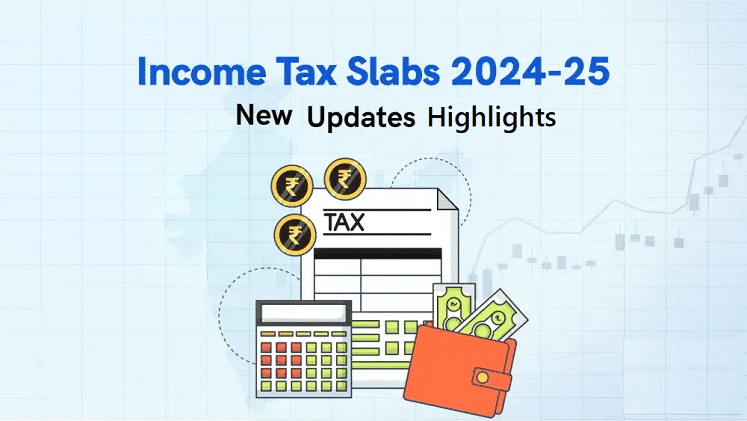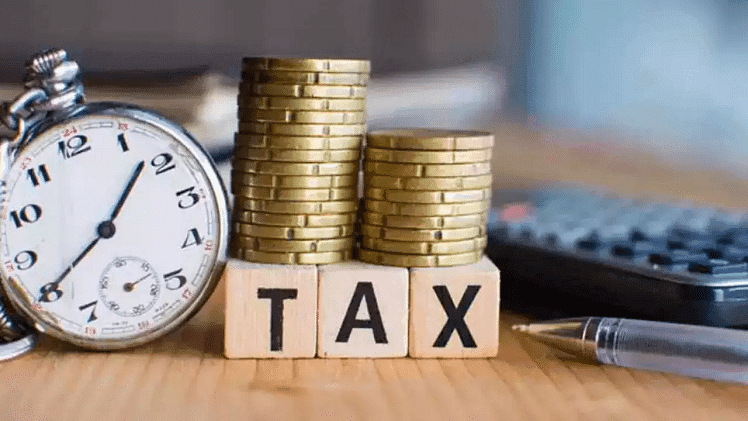Income Tax Slab For Ay 2024-25 Pdf: Complete Guide to Taxation in India

Income tax slab for ay 2024-25 pdf is a vital aspect of the Indian economy, and it is crucial for individuals to understand the tax slabs, exemptions, and deductions applicable in each Assessment Year (AY). The income tax slab for ay 2024-25 pdf is important as it determines how much you need to pay based on your income. In this article, we will delve into the detailed breakdown of income tax slabs, the new tax regime, deductions, exemptions, and how to file your taxes for the AY 2024-25.
Introduction to Income Tax Slabs
In India, the income tax system is progressive, meaning that as your income increases, the rate of tax you pay also increases. The government revises these tax slabs periodically, typically every financial year. The income tax slab for ay 2024-25 pdf is based on the income earned during the financial year 2023-24 (April 1, 2023, to March 31, 2024). Understanding these slabs is essential for individuals to calculate their tax liabilities accurately.
Each taxpayer must fall under one of the following categories:
- Individual taxpayers
- Hindu Undivided Family (HUF)
- Companies
- Firms
For individuals, the tax structure varies based on age and income. For AY 2024-25, there are two primary tax regimes: the Old Regime (with exemptions and deductions) and the New Regime (without exemptions or deductions). Both regimes have different tax slabs and are designed to give taxpayers flexibility in choosing the most suitable option for them.
Income Tax Slab for AY 2024-25: Key Highlights

Before diving into the specifics of each tax slab, let’s first look at some key highlights for the Income Tax Slab for AY 2024-25:
- The old tax regime remains in place, allowing taxpayers to claim various exemptions and deductions, like HRA (House Rent Allowance), 80C deductions, etc.
- The new tax regime offers lower tax rates but eliminates most exemptions and deductions.
- The rebate under Section 87A is available for taxpayers with income up to ₹5 lakh, effectively making them tax-free under both regimes.
- The Surcharge for individuals earning above ₹50 lakh has been revised.
The table below summarizes the income tax slabs for AY 2024-25:
| Income Range (₹) | Old Regime Tax Slab | New Regime Tax Slab |
|---|---|---|
| Up to ₹2.5 Lakh | No Tax | No Tax |
| ₹2.5 Lakh to ₹5 Lakh | 5% | 5% |
| ₹5 Lakh to ₹10 Lakh | 20% | 10% |
| ₹10 Lakh to ₹20 Lakh | 30% | 15% |
| ₹20 Lakh to ₹50 Lakh | 30% | 20% |
| ₹50 Lakh and above | 30% + Surcharge | 30% + Surcharge |
Income Tax Slabs for Individuals Below 60 Years
For individuals below the age of 60 years, the income tax slabs for AY 2024-25 follow the structure mentioned in the above table. Let’s break down the key points for these taxpayers:
- Income up to ₹2.5 lakh: No tax is levied.
- Income between ₹2.5 lakh and ₹5 lakh: Tax is levied at 5%.
- Income between ₹5 lakh and ₹10 lakh: Tax is levied at 20%.
- Income above ₹10 lakh: Tax is levied at 30%, with applicable surcharge.
Taxpayers in this category can also benefit from the Section 87A rebate, which reduces the tax liability for individuals earning less than ₹5 lakh.
Income Tax Slabs for Senior Citizens (60-80 Years)
Senior citizens (individuals aged between 60 and 80 years) are eligible for a higher tax exemption limit. For these taxpayers, the income tax slabs for AY 2024-25 are as follows:
| Income Range (₹) | Tax Rate (Senior Citizens) |
|---|---|
| Up to ₹3 Lakh | No Tax |
| ₹3 Lakh to ₹5 Lakh | 5% |
| ₹5 Lakh to ₹10 Lakh | 20% |
| ₹10 Lakh and above | 30% |
Key Points:
- Senior citizens get an additional exemption of ₹50,000 compared to regular individuals.
- The rebate under Section 87A is applicable for those earning less than ₹5 lakh.
Income Tax Slabs for Super Senior Citizens (Above 80 Years)
For super senior citizens (individuals aged 80 years and above), the government offers even more significant tax relief. The income tax slabs for super senior citizens for AY 2024-25 are:
| Income Range (₹) | Tax Rate (Super Senior Citizens) |
|---|---|
| Up to ₹5 Lakh | No Tax |
| ₹5 Lakh to ₹10 Lakh | 20% |
| ₹10 Lakh and above | 30% |
Key Points:
- Super senior citizens enjoy an exemption limit of ₹5 lakh.
- No tax is levied on income up to ₹5 lakh.
- Section 87A rebate can also be availed.
Comparison of Old vs. New Tax Regime for AY 2024-25
The major difference between the old and new tax regimes lies in the deductions and exemptions. While the old tax regime allows for exemptions and deductions like 80C (for life insurance, PPF, etc.), 80D (for health insurance), HRA, and others, the new regime does not allow these deductions.
Tax Slabs:
| Income Range (₹) | Old Regime | New Regime |
|---|---|---|
| Up to ₹2.5 Lakh | No Tax | No Tax |
| ₹2.5 Lakh to ₹5 Lakh | 5% | 5% |
| ₹5 Lakh to ₹10 Lakh | 20% | 10% |
| ₹10 Lakh to ₹20 Lakh | 30% | 15% |
| ₹20 Lakh to ₹50 Lakh | 30% | 20% |
| ₹50 Lakh and above | 30% + Surcharge | 30% + Surcharge |
Deductions:
- Old Tax Regime: Allows deductions for investments under Section 80C, 80D, HRA, and more.
- New Tax Regime: Does not allow these deductions but offers lower tax rates.
Income Tax Slabs for Companies and Firms

In addition to individual taxpayers, companies and firms are also taxed under specific income tax slabs. Here’s a look at the income tax structure for corporate entities for AY 2024-25:
- Domestic Companies:
- Income up to ₹1 Crore: 25%
- Income above ₹1 Crore: 30%
- Small Companies: 25% (Income up to ₹400 crore)
- Firms/LLPs: 30%
Tax Deductions and Exemptions for AY 2024-25
Several deductions and exemptions are available under the Income Tax Act to help taxpayers reduce their taxable income. Some important ones include:
- Section 80C: Deduction of up to ₹1.5 lakh for investments in PF, PPF, life insurance premiums, etc.
- Section 80D: Deduction of up to ₹25,000 for insurance premiums (higher for senior citizens).
- Section 24(b): Deduction of up to ₹2 lakh on home loan interest.
- Section 10(14): Exemption on house rent allowance (HRA) for salaried individuals.
- Section 87A: Rebate of ₹12,500 for individuals earning up to ₹5 lakh.
How to Calculate Income Tax for AY 2024-25
To calculate your income tax for AY 2024-25, follow these steps:
- Determine your total income: Add your salary, business income, income from other sources, etc.
- Apply applicable deductions: Use deductions under Sections 80C, 80D, 24(b), etc.
- Determine your taxable income: Subtract the deductions from your total income.
- Apply the tax slabs: Calculate the tax based on the taxable income.
- Apply rebates: If eligible, apply the rebate under Section 87A.
- Pay the tax: If applicable, pay the balance tax via online payment.
Income Tax Filing Process for AY 2024-25
Filing income tax returns (ITR) is an essential part of compliance. Here’s the general process for AY 2024-25:
- Collect Documents: Gather Form 16, bank statements, proof of deductions, etc.
- Choose the correct ITR form: There are different forms based on your income type.
- Fill the ITR form: You can fill the form online via the Income Tax e-Filing Portal.
- Submit the ITR: Once filled, submit the form and download the acknowledgment.
- Verify your ITR: You can verify via Aadhaar OTP, net banking, or physical verification.
Common Mistakes to Avoid During Tax Filing
Some common mistakes taxpayers make include:
- Not claiming eligible deductions.
- Incorrectly calculating taxable income.
- Filing the wrong ITR form.
- Missed deadlines for filing returns.
Income Tax FAQs for AY 2024-25
What is the last date for filing ITR for AY 2024-25?
The last date for filing ITR for AY 2024-25 is typically July 31, 2024, unless extended by the government.
Can I change my tax regime after filing?
No, once you file your return for the financial year, you cannot change your tax regime.
Are there any new deductions for AY 2024-25?
Currently, the government has not introduced any new major deductions for AY 2024-25.
Conclusion
Understanding the Income Tax Slab for AY 2024-25 is critical for every taxpayer. By knowing the tax slabs, deductions, and exemptions available, you can effectively manage your tax liabilities. Whether you opt for the old regime with deductions or the new regime with lower tax rates, the key is to plan ahead and make the most of available benefits.




